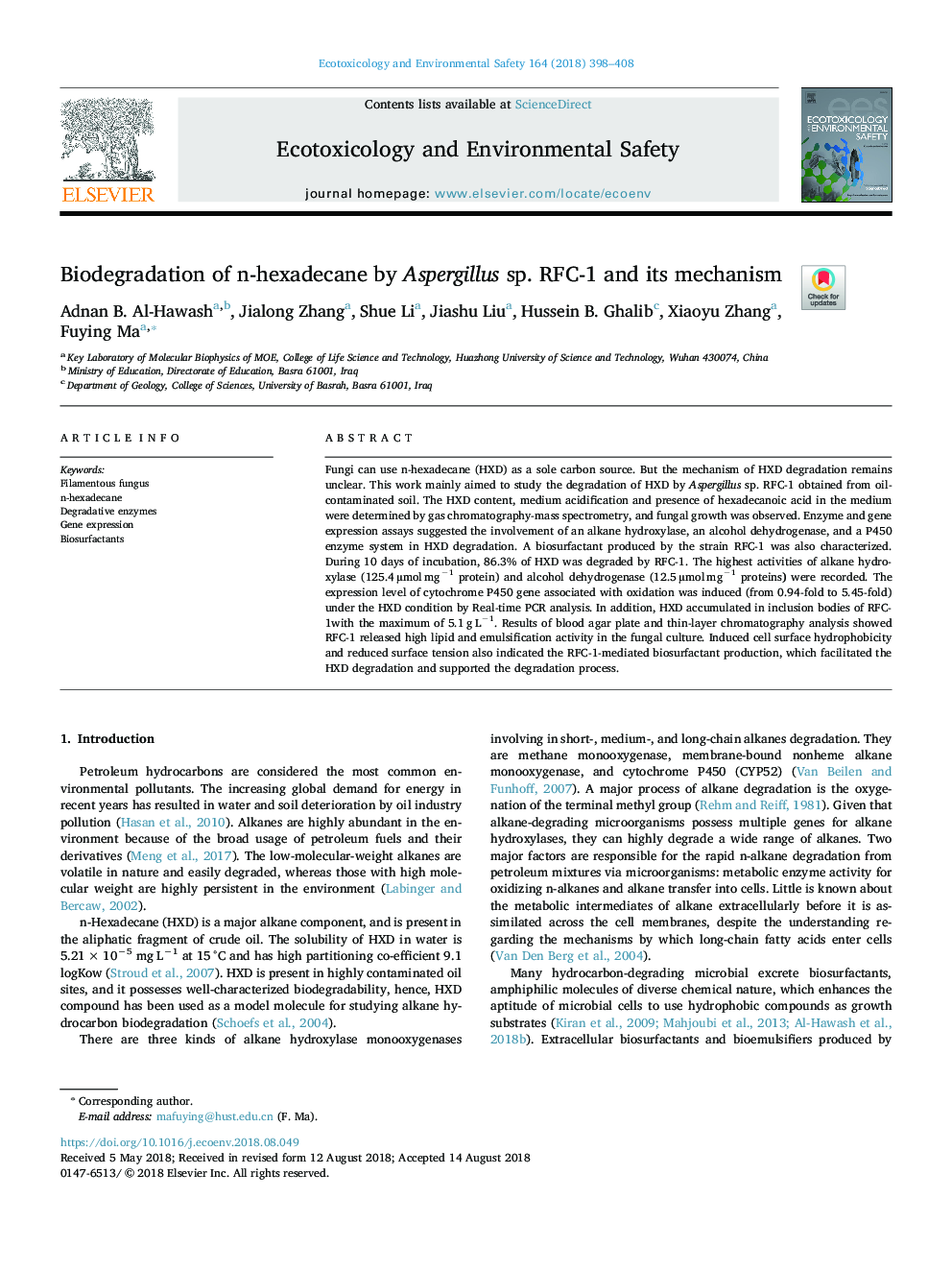| Article ID | Journal | Published Year | Pages | File Type |
|---|---|---|---|---|
| 8853113 | Ecotoxicology and Environmental Safety | 2018 | 11 Pages |
Abstract
Fungi can use n-hexadecane (HXD) as a sole carbon source. But the mechanism of HXD degradation remains unclear. This work mainly aimed to study the degradation of HXD by Aspergillus sp. RFC-1 obtained from oil-contaminated soil. The HXD content, medium acidification and presence of hexadecanoic acid in the medium were determined by gas chromatography-mass spectrometry, and fungal growth was observed. Enzyme and gene expression assays suggested the involvement of an alkane hydroxylase, an alcohol dehydrogenase, and a P450 enzyme system in HXD degradation. A biosurfactant produced by the strain RFC-1 was also characterized. During 10 days of incubation, 86.3% of HXD was degraded by RFC-1. The highest activities of alkane hydroxylase (125.4â¯Âµmolâ¯mgâ1 protein) and alcohol dehydrogenase (12.5â¯Âµmolâ¯mgâ1 proteins) were recorded. The expression level of cytochrome P450 gene associated with oxidation was induced (from 0.94-fold to 5.45-fold) under the HXD condition by Real-time PCR analysis. In addition, HXD accumulated in inclusion bodies of RFC-1with the maximum of 5.1â¯gâ¯Lâ1. Results of blood agar plate and thin-layer chromatography analysis showed RFC-1 released high lipid and emulsification activity in the fungal culture. Induced cell surface hydrophobicity and reduced surface tension also indicated the RFC-1-mediated biosurfactant production, which facilitated the HXD degradation and supported the degradation process.
Related Topics
Life Sciences
Environmental Science
Environmental Chemistry
Authors
Adnan B. Al-Hawash, Jialong Zhang, Shue Li, Jiashu Liu, Hussein B. Ghalib, Xiaoyu Zhang, Fuying Ma,
